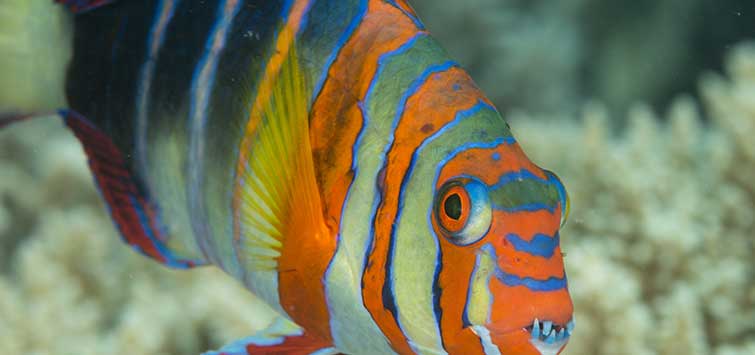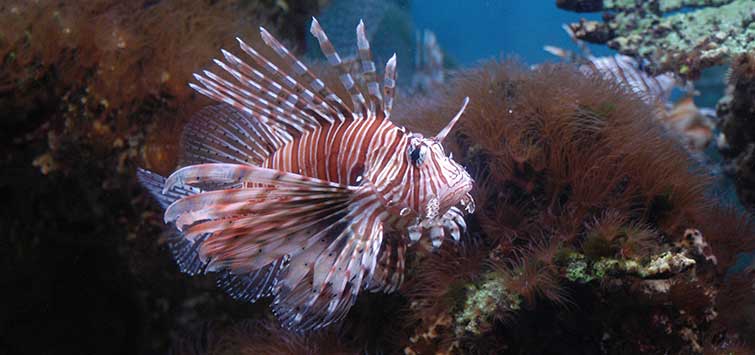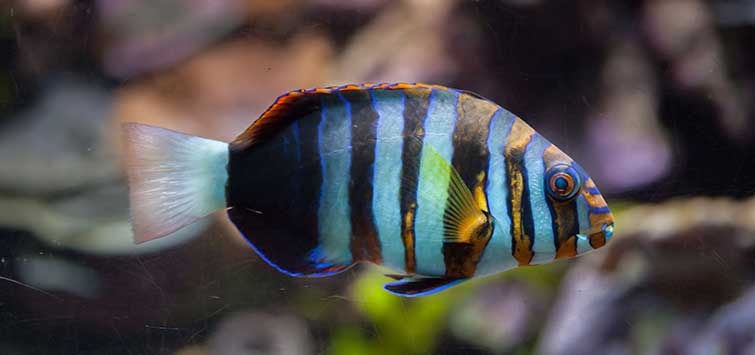Choerodon fasciatus
Common Names: Harlequin tuskfish, harlequin tusk, tusk harlequinalia
Type Locality: Cape York, Australia
Range: Western Pacific
Taxonomic Troubles: Originally described as Lienardella fasciata.
Size: 30 cm (12 inches) TL.
Preferred Water Chemistry: Tropical marine.
Difficulty: A hardy, territorial, but fairly peaceful species.
Tank Setup: A large tank with large tankmates is needed. As their territories on the reef are much larger than any standard aquarium, keep only one per tank. Although able to hold its own, this fish is shy and requires plenty of hiding spaces to feel secure. A live r
Feeding: Carnivorous. Natural diet is mostly benthic invertebrates. Fish and seafood meat chunks are ideal. Description: The alternating orange and white bars are edged in various amounts of blue. Australian specimens are considered the most colorful. The four pr
Breeding: Nothing is known about their reproduction, in the wild or in captivity.
Fish Description
The alternating orange and white bars are edged in various amounts of blue. Australian specimens are considered the most colorful. The four protruding teeth are blue. Juveniles are less colorful and have ocelli (eyespots) on the fins.
Notes
This fish is not a typical wrasse. It has no sexual dimorphism and doesn’t sleep in the sand, and despite its large teeth, it usually leaves tankmates alone unless they are small enough to eat. It is generally considered suitable just for fish-only setups, but some adventurous reefkeepers with very large systems have tried this species. Obviously these reef tanks did not include any small crustaceans or small fish—at least not for long!

.png?h=595&iar=0&w=2781&hash=5FD5E69473BCC22199FBFA2FB71B6033)



